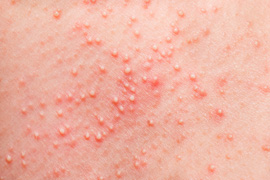Skin rashes are a common problem that can cause irritation, redness, itching, and discomfort. They may appear suddenly due to allergies, insect bites, infections, or contact with irritants. While medical treatment may be required in some cases, there are also several effective home remedies that can help relieve symptoms naturally.
Common Causes of Skin Rashes
Before exploring remedies, it’s important to understand the possible causes of rashes
- Allergic Reactions Contact with pollen, pet dander, detergents, or specific foods.
- Insect Bites Mosquitoes, fleas, or spiders can cause itchy, red patches.
- Heat Rash Excessive sweating can lead to blocked pores and irritation.
- Infections Bacterial, fungal, or viral infections may trigger rashes.
- Chronic Conditions Eczema, psoriasis, or dermatitis often cause recurrent rashes.
Best Home Remedies for Skin Rashes
1. Aloe Vera Gel
Aloe vera has natural anti-inflammatory and soothing properties. Applying fresh aloe vera gel directly to the rash can reduce redness, itching, and irritation. It also helps hydrate the skin.
How to use:
- Cut open a fresh aloe leaf and extract the gel.
- Apply to the affected area 2-3 times daily.
2. Oatmeal Baths
Colloidal oatmeal is known for its ability to calm inflamed and itchy skin. An oatmeal bath can provide relief, especially for heat rash or allergic reactions.
How to use:
- Grind oatmeal into a fine powder and add it to lukewarm bath water.
- Soak in it for 15-20 minutes.
3. Cold Compress
A simple cold compress can work wonders to relieve itching and reduce inflammation. Cold helps numb the affected area and prevent further irritation.
How to use
- Wrap ice cubes in a clean cloth and place it on the rash.
- Avoid direct application of ice to prevent skin damage.
4. Coconut Oil
Virgin coconut oil is rich in fatty acids that moisturize and heal dry, irritated skin. It also has antibacterial and antifungal properties, making it effective for mild rashes.
How to use
- Apply a thin layer of coconut oil to the rash.
- Leave it on overnight for best results.
5. Apple Cider Vinegar
Apple cider vinegar (ACV) has antimicrobial and anti-inflammatory properties. It can help reduce irritation caused by bacterial or fungal rashes.
How to use:
- Mix equal parts of ACV and water.
- Apply with a cotton ball to the rash once daily.
6. Chamomile Tea Compress
Chamomile is well known for its calming effects, both internally and externally. A chamomile tea compress can reduce itchiness and promote healing.
How to use:
- Brew chamomile tea and let it cool.
- Soak a cloth in the tea and apply to the rash for 10–15 minutes.
7. Turmeric Paste
Turmeric contains curcumin, a compound with strong anti-inflammatory and antibacterial properties. A turmeric paste can be especially useful for rashes caused by infections.
How to use:
- Mix turmeric powder with a little water or coconut oil to form a paste.
- Apply to the rash and leave for 20 minutes before rinsing.
8. Neem Leaves (Indian Lilac)
Neem has been used for centuries in Ayurvedic medicine for its antimicrobial and healing properties. Neem leaves or oil can reduce rash symptoms effectively.
How to use:
- Boil neem leaves in water and let it cool.
- Use the water as a wash or compress for the rash.
9. Honey
Raw honey is a natural antibacterial and skin-soothing agent. It not only calms itching but also prevents infection.
How to use:
- Apply a thin layer of raw honey to the rash.
- Leave it for 15–20 minutes before rinsing.
10. Baking Soda Paste
Baking soda helps neutralize skin irritation and relieve itching.
How to use:
- Mix baking soda with water to form a paste.
- Apply gently to the affected area and rinse after 10 minutes.
When to See a Doctor
While home remedies can be very effective for mild skin rashes, it’s important to seek medical advice if:
- The rash spreads quickly.
- There is severe swelling or blistering.
- You develop fever, dizziness, or shortness of breath.
- The rash shows signs of infection (pus, yellow crusts, severe pain).
The Role of Cephalexin in Treating Rashes
Sometimes rashes are caused by bacterial infections, such as cellulitis or impetigo. In such cases, doctors may prescribe antibiotics like cephalexin capsules. Cephalexin is a cephalosporin antibiotic that works by stopping bacterial growth.
It’s important to note that antibiotics should never be used without medical supervision. Overuse or misuse can lead to resistance. If a doctor prescribes cephalexin, you can obtain it from trusted cephalexin capsules distributors who ensure quality and authenticity.
Precautions for Home Remedies
- Always do a patch test before applying any natural remedy to ensure you are not allergic.
- Avoid scratching the rash, as it may worsen irritation or cause infection.
- Keep the affected area clean and dry.
- Wear loose, breathable clothing to prevent further irritation.
Conclusion
Skin rashes can be frustrating and uncomfortable, but in many cases, home remedies like aloe vera, coconut oil, oatmeal baths, and chamomile compresses can provide quick relief. For rashes caused by infections, medical treatment may be required, and antibiotics such as cephalexin capsules (readily available from reliable cephalexin capsules distributors) may be prescribed by healthcare professionals.
Ultimately, identifying the cause of the rash is the most important step to ensure proper treatment. With a combination of natural remedies and professional medical care when needed, most rashes can be effectively managed.

